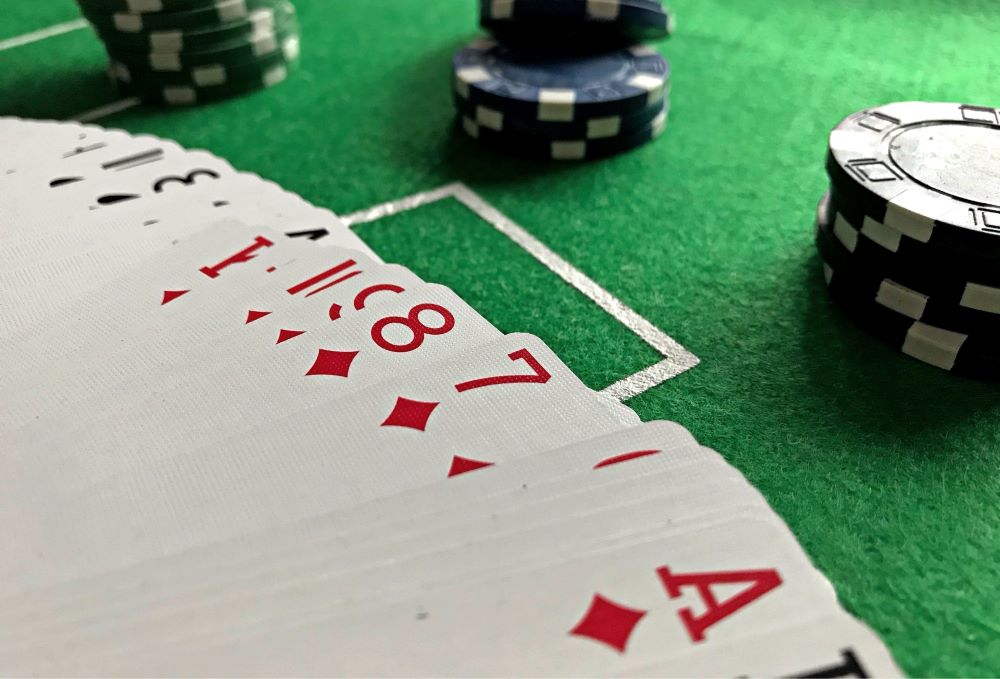

Texas Hold'em Basic Guide P6: Common mistakes you make playing Texas Hold'em

As soon as you become familiar with the basics
of poker and fortune has smiled on you a little, you feel like you're ready for
anything and there's no stopping you. This feeling of false euphoria can
play a trick on anyone who rushes into a game of Texas Hold'em, mainly
because this impulse prevents you from being able to interpret the game
correctly and lose track of what is actually happening at the table.
In order for you to know what are the most common mistakes you can make and that you are probably making playing a game of Texas Hold'em, we are going to review the most common blunders that can be seen at a poker table.
Most common blunders in a
game of Texas Hold'em
It's hard to list all the kinds of mistakes
that can be made in a poker game. There is also the risk of interpretation, and
what may be a mistake for some may be a risky but measured move for
others. In any case, we are going to try to include a series of basic concepts
so that you can identify the most common mistakes.
As a postscript, keep in mind that making
mistakes is part of the learning curve, but that a skilled player will
quickly pick up on you and your style of play based on the mistakes you make.
Make sure you match up with players of your own level to avoid getting ripped.
Among the most common mistakes made in a game
of Texas Hold'em are playing too many starting hands, going too deep with trap
hands, and not going over modest cards. These three mistakes are both the
worst and the best, and show that both too much caution and too much risk
can ruin the game.
But there are other areas of focus. For
example, a common mistake among the amateur player is not to raise with very
good cards, causing too many hands to stop on the flop.
Another common mistake is to bet looking for
cards that will make a better hand. There is a tendency to settle for a good
but somewhat mediocre hand, rather than thinking that the cards can be saved
to form better hands later on.
This has something to do with the ability to read the game, which grows with experience and which only practice can improve. It is precisely this ability that can lead to a mistake that no beginner can avoid: focusing on one's own game and neglecting that of others. Taking into account aspects such as who raised pre-flop, what kind of players are left in the pot or how many made the flop is key to making a correct reading of the game.
Other common mistakes that
can be made in a poker game
As you play a game of Texas Hold'em and gain
experience, you will make different mistakes each time. This is the basis of
poker: practice, practice, practice is the only way to specialize and become a
high-quality professional player. A typical mistake of intermediate players
is not being aggressive enough on the flop. This denotes a lack of
initiative, and the lions at the table will be rubbing their hands together
with this type of player.
The flip side is also typical of the reckless
with a lot to prove and a lot to lose: going all-in without considering the pot
stakes is something that blinds the less cautious and can cost them dearly.
But not everything depends on the player. In
poker, as you probably know, luck also has a lot to say. The table you choose
to play at will be decisive, as one factor that cannot be controlled is the
profile of the players. When you join a table, you don't know who your
opponents are and only when you start playing, you’ll be able to start to
categorize them, so it's a kind of leap of faith that you have to take in
order to qualify for the pot.
And beware of betting limits. Some players who are not very management-minded may find it difficult to handle figures with several zeros. Lacking sufficient funds to play at a certain limit can lead to ruin, so be careful. To give you an idea, it takes about 300 times the largest bet to play it safe.
Everything you need to
know about pot betting
It's true that inexperience can play tricks,
but it's essential that you know something about pot bets. Pot bets are used to
calculate whether a particular play has a positive or negative expected
value. In other words, it is the relationship between the size of the bet
and the size of the pot.
To calculate pot bets, you need to know the
current odds of your hand, but this value can change as new community cards
appear.
Professional players follow the 4% rule. The percentage increases by 4% for each number of chances to achieve the desired combination. It's a good basis to start from, so use it when you don't yet feel you can predict the values fluently.
More of this Guide:
Basic Guide to Texas Hold'Em P7: best Texas Hold'Em tournaments
You may also like

Playing poker at home or in a bar: is it legal?
Maybe you have never asked yourself this question: Is it legal to play poker in a bar or at home with friends? As a card game, very often we do not associate it with breaking the law while enjoying...

10 ideas for poker card tattoos
We can't deny it: we love poker. And what better way to express our passion for this game than by getting a tattoo of something related to it on our skin? As we become more assiduous in poker envir...

Straights in poker
Learning how to play poker is really important when it comes to winning games against the strongest opponents. Poker may seem like a simple card game, but we can assure you that it is more complex...













